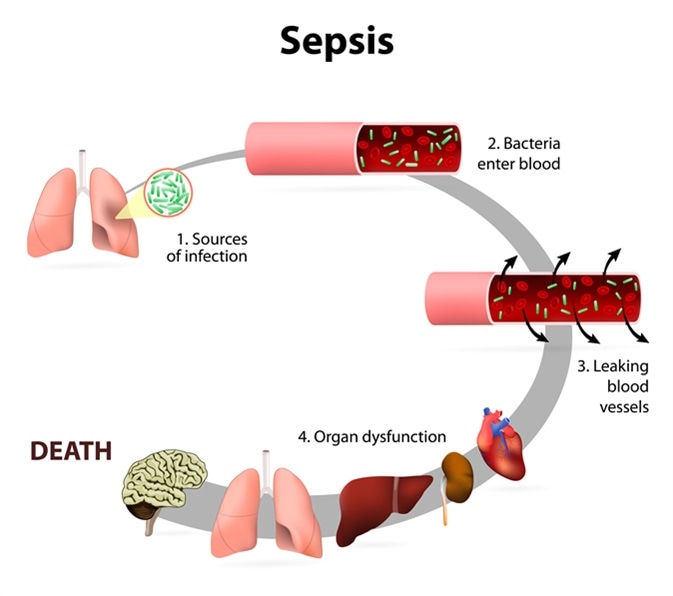For The Latest Medical News, Health News, Research News, COVID-19 News, Pharma News, Glaucoma News, Diabetes News, Herb News, Phytochemical News, Thailand Cannabis News, Cancer News, Doctor News, Thailand Hospital News, Oral Cancer News, Thailand Doctors
Sepsis is an extreme immune reaction of the human body toward serious bacterial infection circulating in the bloodstream. It becomes life-threatening or lethal when it manifests in the extreme stages of severe sepsis and septic shock.
The time taken for full recovery from sepsis for each individual differs, and it depends on several factors such as the severity of infection, the overall health condition of the patient, and the type of treatment provided.

In mild sepsis, complete recovery is possible at a quicker rate. On an average, the recovery period from this condition takes from about three to ten days depending on the response to the appropriate treatment including medication.
Severe sepsis requires immediate treatment in the critical care area for a period of one month or more. Recovery is achievable, but it takes a longer time. Many individuals are known to have regained normal health after severe sepsis without residual dysfunctions. In severe sepsis, the recovery period duration varies from patient to patient, as it depends on the number of organs impacted by the infection and the extent of organ dysfunction.
About 50% of severe sepsis survivors experience either short- or long-term cognitive and physical problems, which are collectively termed as post-sepsis syndrome, during their recovery period. The difficulties may include physical (excessive fatigue, weaker muscle strength, bloated limbs, and chest pain), psychological (anxiety, memory loss), and mental (inability to do simple arithmetical calculations) issues.
It is necessary to provide rehabilitation facilities to the patient so that they can return to normal life. The duration of recovery from PSS is about two years or more.
Recovery at hospital: Recovery from post-sepsis syndrome is initiated in the hospital by the physiotherapist, who helps the patients to carry out simple everyday activities on their own, such as:
Recovery at home: After discharge from hospital, the sepsis survivor needs detailed care at home along with regular reviews with the healthcare provider.
Septic shock is a life-threatening stage of generalized infection, where the chance of patient survival is only about 50%, owing to multiple organ dysfunction associated with low blood pressure. Complete recovery from septic shock would imply the termination of any auxiliary therapies, which is not usually possible. In most cases, a patient with pre-existing chronic disease who survives septic shock is likely to need lifelong supportive treatment because of permanent organ dysfunction.
Amputation of a part of the body, such as one or more fingers or toes, or of a limb, either in part or completely, is sometimes done to increase the rate of survival in patients who develop gangrene during septic shock. Amputation leads to scarring and changes in the structure of normal tissue, which is termed as contractures, as a result of the normal wound healing process. To prevent contracture, the physiotherapist will recommend
Even after surviving septic shock, some patients require lifelong dialysis due to kidney failure.
Patients with late stages of sepsis need more time to recover when there is post-sepsis or sepsis-induced organ dysfunction. More research or studies are needed to find the best way of overcoming these complications.
A recent report by the Journal of Leukocyte Biology states that if a protein called high mobility group box 1(HMGB1), which is elevated in the late stages of sepsis, is increased or neutralized, white blood cell (neutrophil) dysfunction can be corrected. This promotes the ability of the body to destroy bacteria during the recovery period.
The world’s first trial of stem cell therapy for sepsis was performed in Ottawa. A septic shock patient in Ottawa hospital was administered 30 million mesenchymal cells along with the specific treatment for sepsis, which resulted in complete recovery.